Froment-Richard delights us again with his characteristically whimsical depictions of children, and this series has the added fillip of French cuisine. What could be more charming (or delicious)?
As you may have guessed from the multiple mollusks, many of the plates feature seafood, such as this baby waving from inside a giant clam shell with his (as my grandchildren would say) “nudey-bottom” friend looking in.
A seaside chef with apparent scoliosis cooks up a pan of escargot.
Then we have the lobster wrestler.
A little background on the plates, before we get too deeply into the crafting of table setting. The artist resonsible for these whimsical plates, Antoine-Albert Richard, was born in 1845 and was known professionally as Froment-Richard.
The giveaway that you’ve got the real McCoy are the initials FR, usually tucked away somewhere in the design. In this series, they usually lurk on the beach or in small tufts of grass.
Froment’s themes typically revolve around children set in fantasy scenes, and he produced bodies of work for two rival manufacturers: “Enfants Richard” for producer Sarreguemines are featured in a previous blog shown here. This is one of the Enfants Richard plates – you can see the similarity in the whimsical children.
Today’s post features a set of his “Service Parisien” produced by Creil Montereau, or more formally, the Faïenceries de Creil et Montereau, which operated from 1840 to 1895. Babies in pumpkins seem to be a thing with Froment-Richard. 🙂
Creil Montereau was an amalgamation of the previously separate potteries in the districts of Montereau and Creil in France. The Montereau works had been producing faïence fine since the 1720s.
By the 1750s, they were locked in bitter competition with the creamy Queen’s ware produced by rival English potter Josiah Wedgwood. Imported Queen’s ware was so popular that it was driving the traditional tin-glazed earthenwares of France out of business.
From plain Queen’s ware (or creamware as we know it today), it was a short step to transferware, wherein designs from a copperplate engravings were transferred to the plain body of the plates. Transfer printing was introduced in France by 1800 through another English rival, somewhat ironically named Christopher Potter.
These Froment-Richard plates are hand-painted and feature an interesting copper-glaze border in a feathery pattern.
Sadly, the Creil Montereau factory closed in 1955; the bulding became abandoned and the archives were lost. Which probably explains why it is so darned difficult to get information on these lovely works of art.
Back to the table. Clearly, the theme established itself – French food, and particularly seafood. A trip to the fishmonger was the first port of call as I loaded up with lobster (already cooked, thank heaven), and bags of mussels, clams and oysters.
We feasted on bi-valves for a few days after setting this table – that’s the great thing about edible centerpieces. I love raw oysters, linguine with clams is a favourite, and mussels provencal always go down well in our house.
From seafood we make a small detour to frog’s legs. It’s a touch macabre seeing the frogs looking at their confreres in the pot…
It was kind of hard to tell that they were frogs, but I deduced it from the plate showing the same child catching them, though the female chef appears to be different.
Quite disturbing is the gloating expression of the hunter stalking the hapless quackers. The French do seem to have something of a ghoulish sense of humour.
Poor ducks…
Eggs! In France, we must have eggs. Boiled eggs.
A few chicken egg cups joined in the party (though they’re from across the channel, by Quail Ceramics, in England).
And fried eggs.
Lastly, we have the redwood inspired asparagus.
That industroius frog-catcher seems to have moved on to vegetable capture. Busy boy (or glrl).
All in, there are ten different plates for a lively table. No shortage of conversation starters here!
The glasses are Old Williamsburg Deep Ultramarine Blue by Imperial Glass from Replacements.
The napkins are Wheaton Stripe in green (discontinued but available in other colours) from Pottery Barn and the napkin rings are from World Market.
Jewel by Spode dinner plates sit beneath the French faience plates, and the chargers are Acacia wood from Amazon (the set is now discontinued, but similar are availalbe).
The lanterns were from Pottery Barn several years ago.
Seafood, sunshine and summer.
I hope everyone is enjoying a relaxing 4th of July and looking forward to a delicous dinner. Bon appetit.
I’m sharing this post with Between Naps on the Porch.

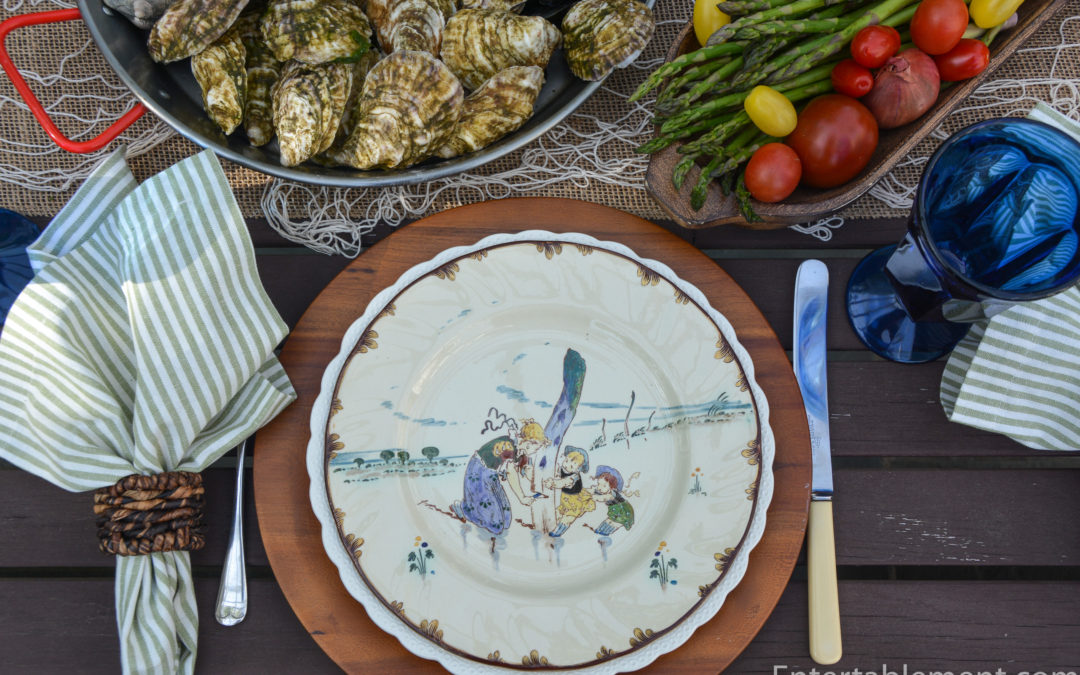

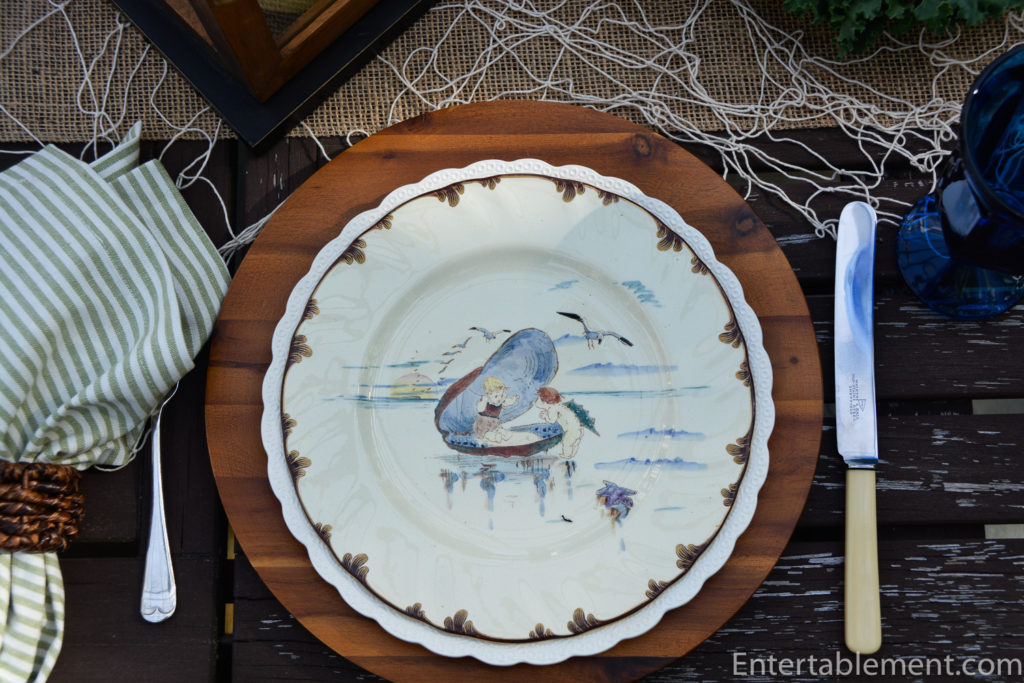
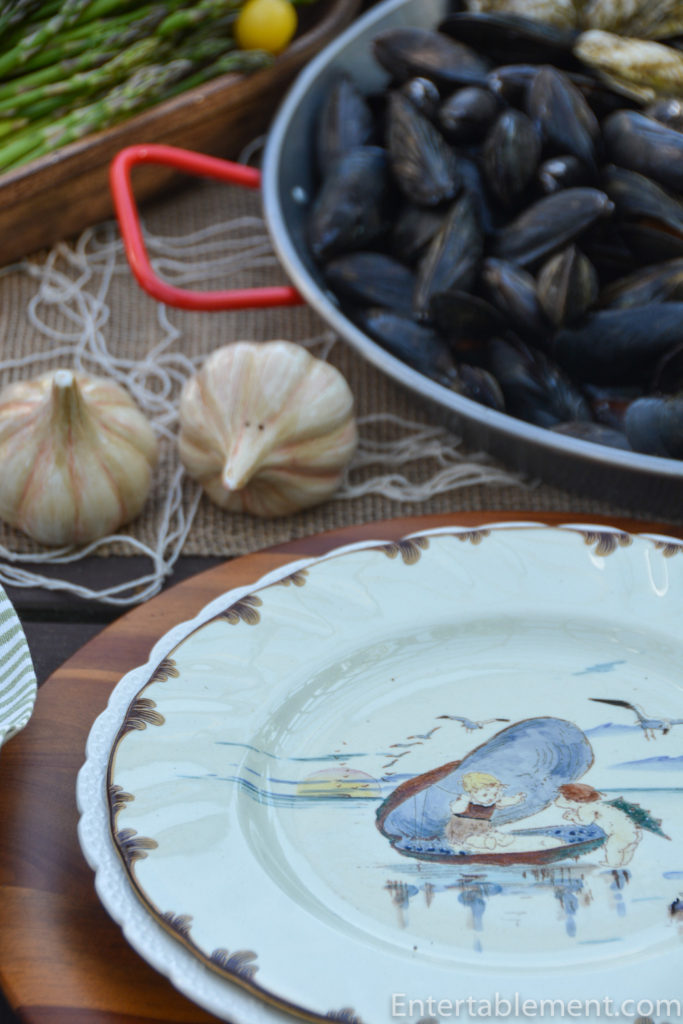


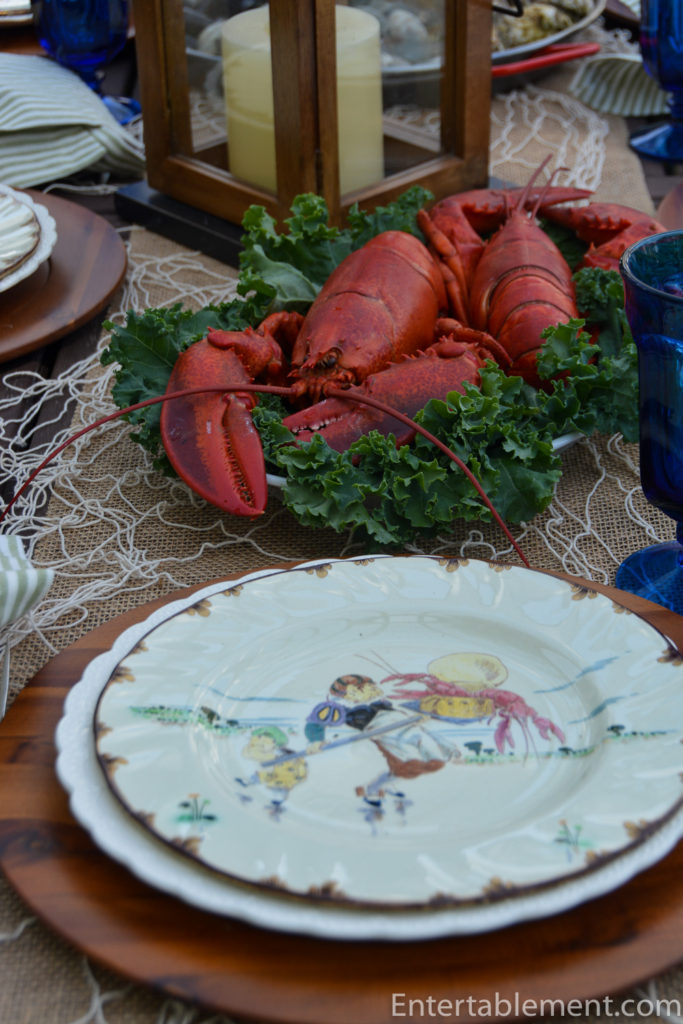






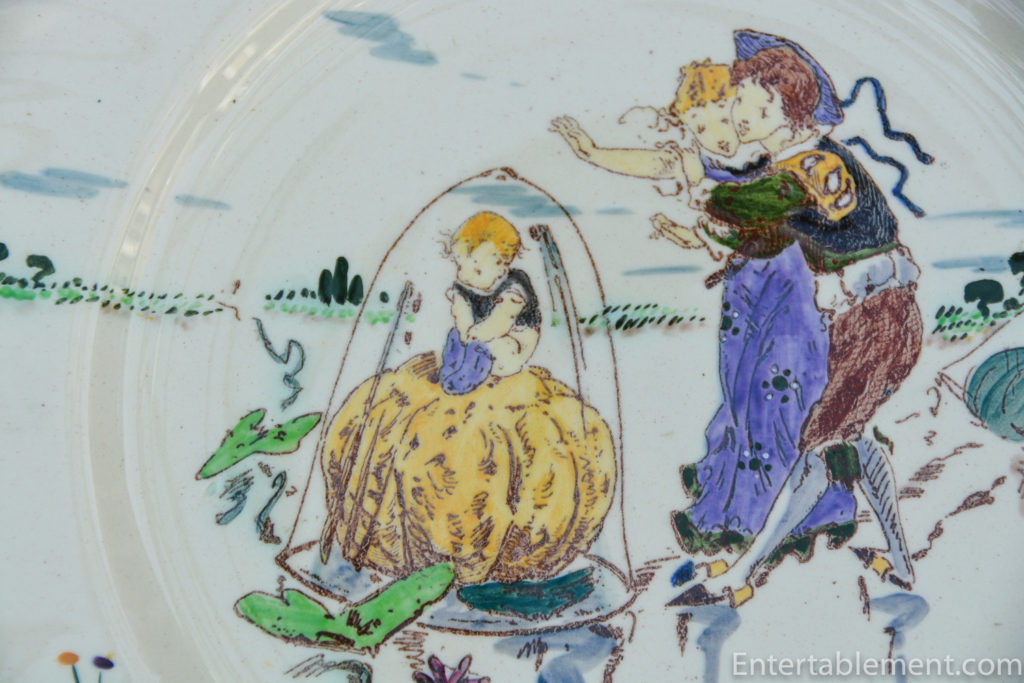
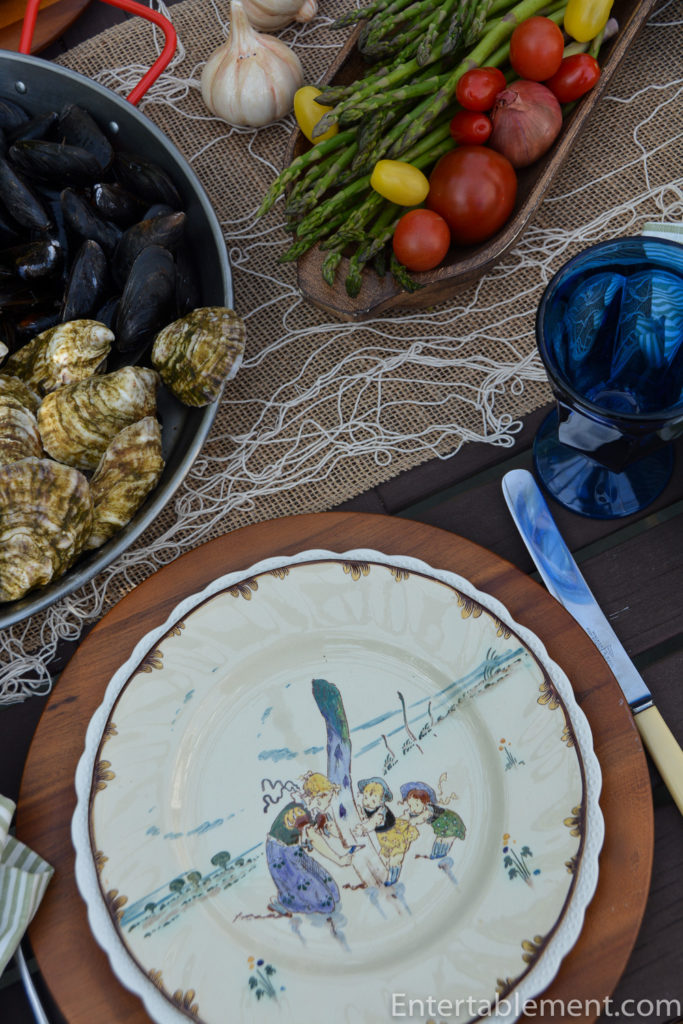

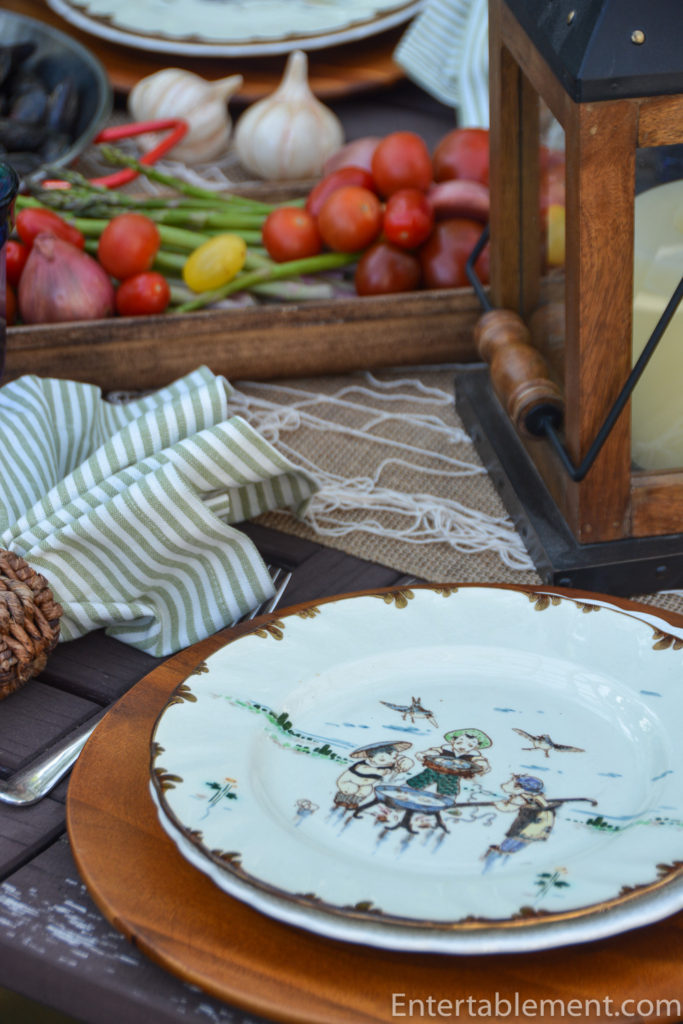
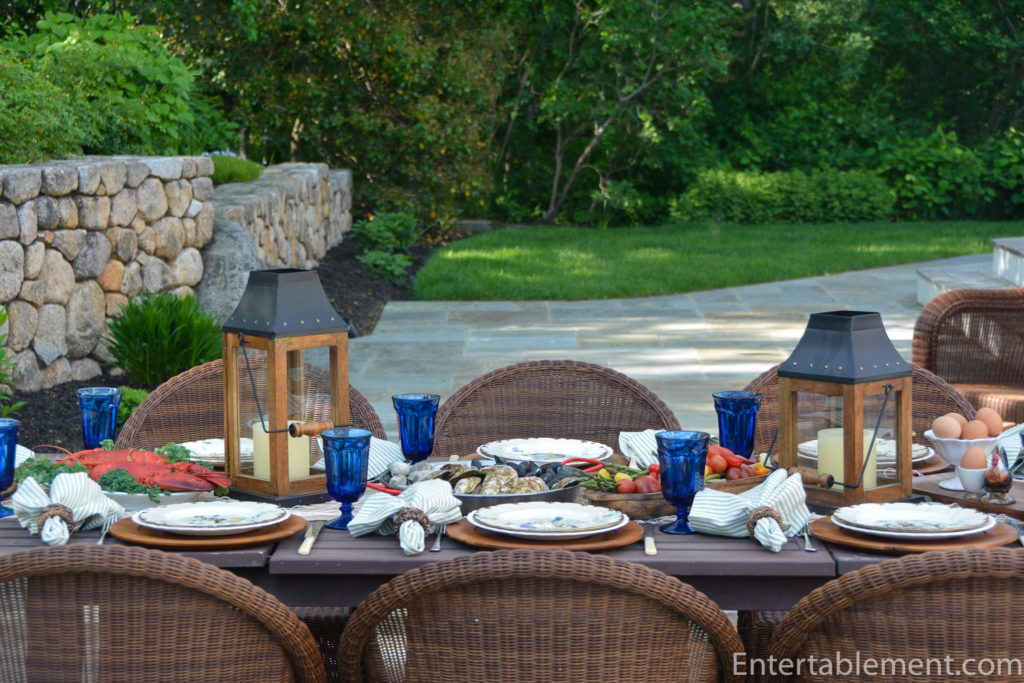


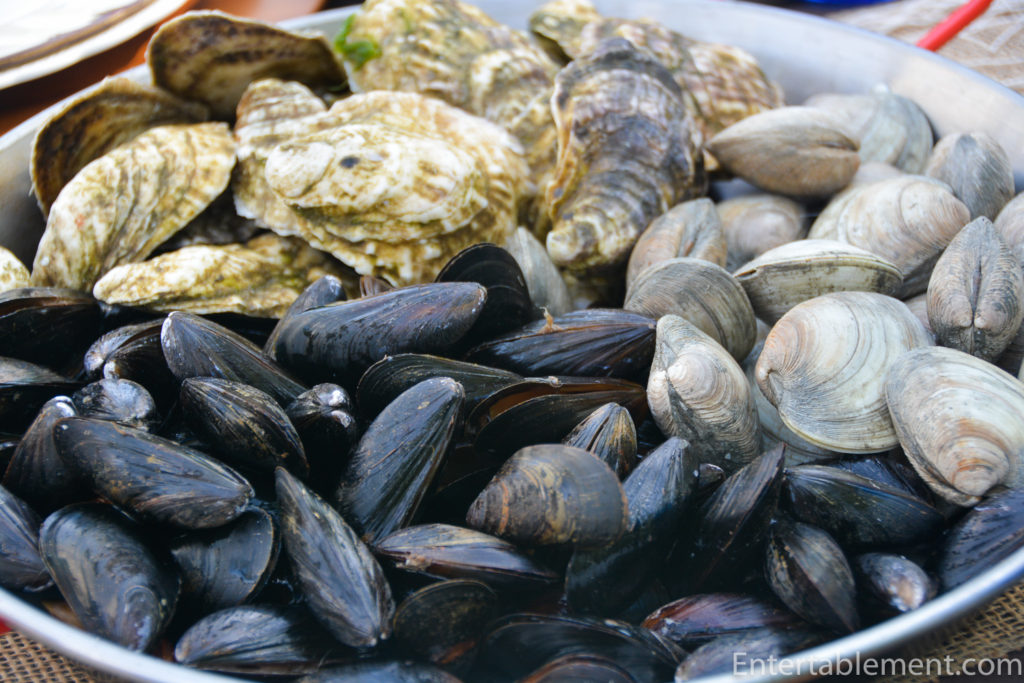

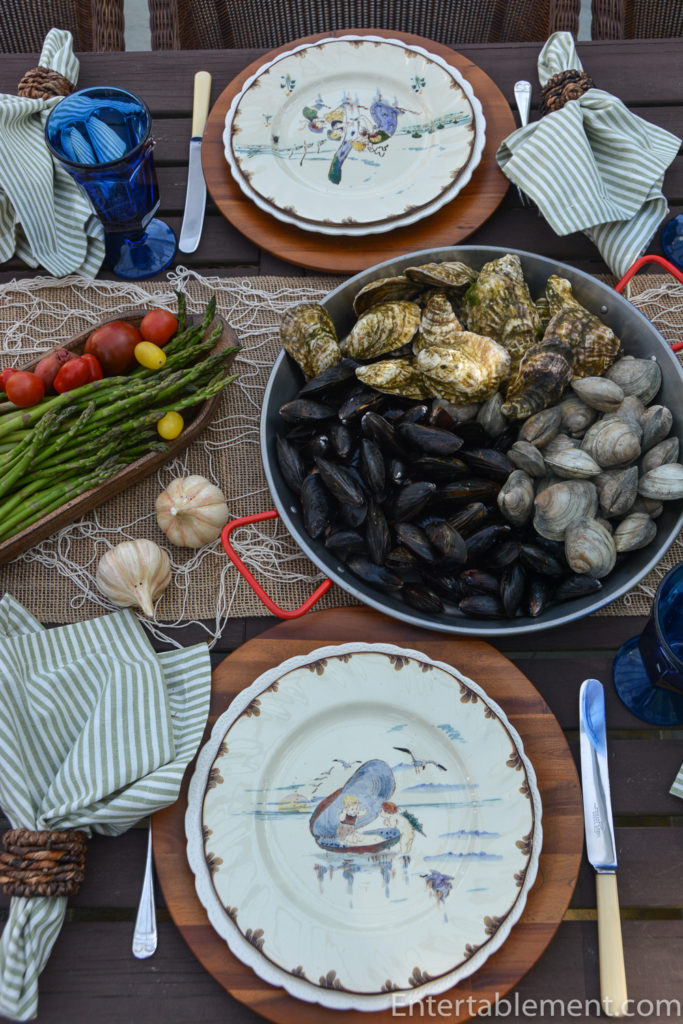




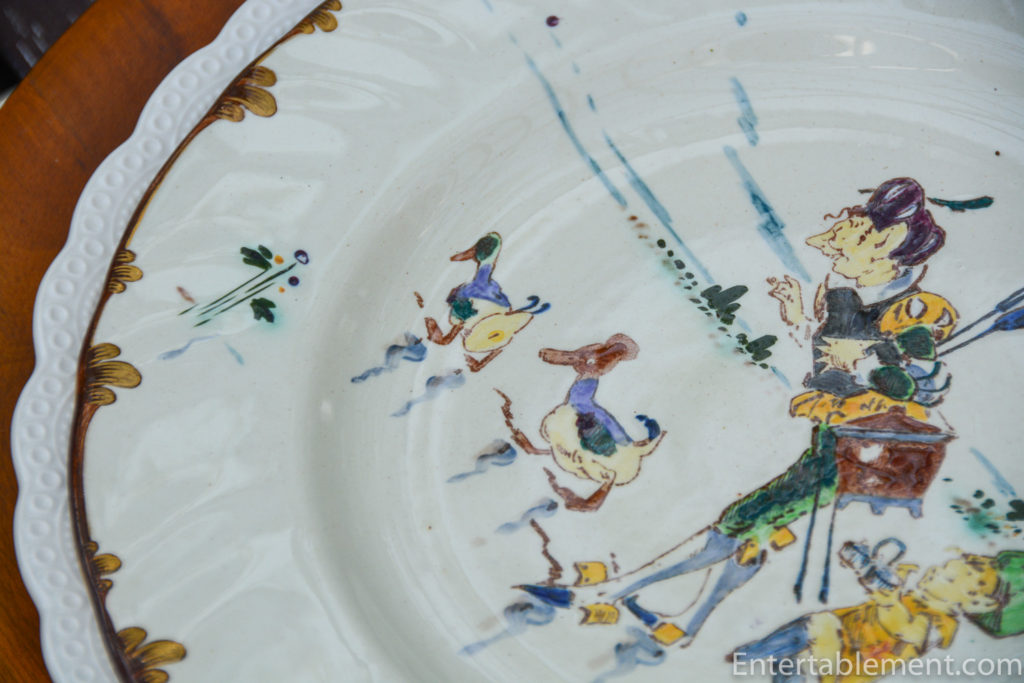
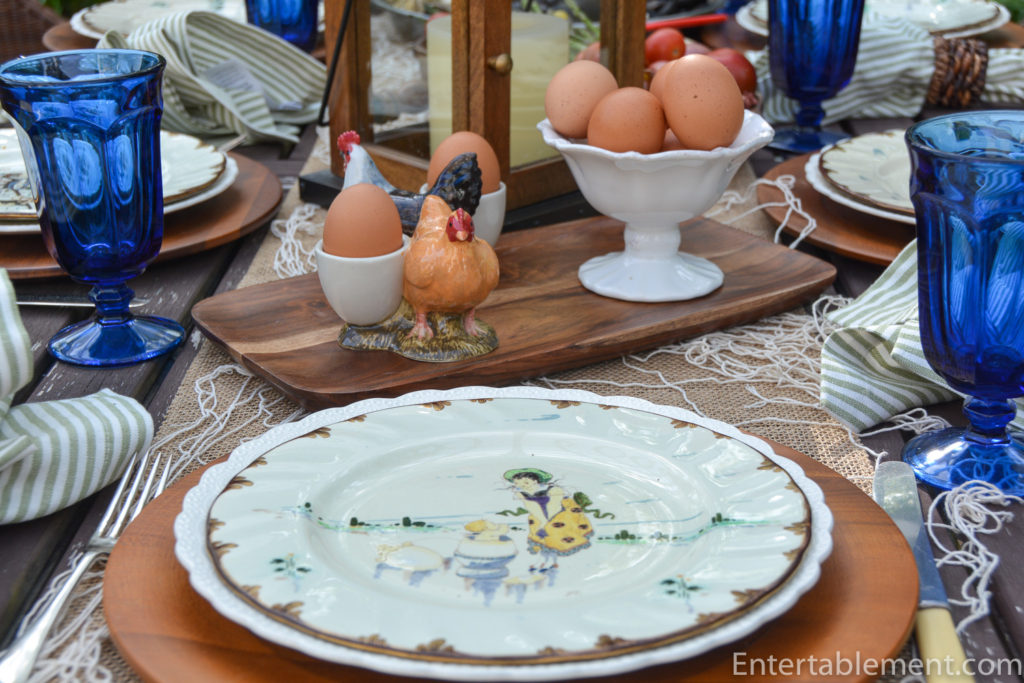
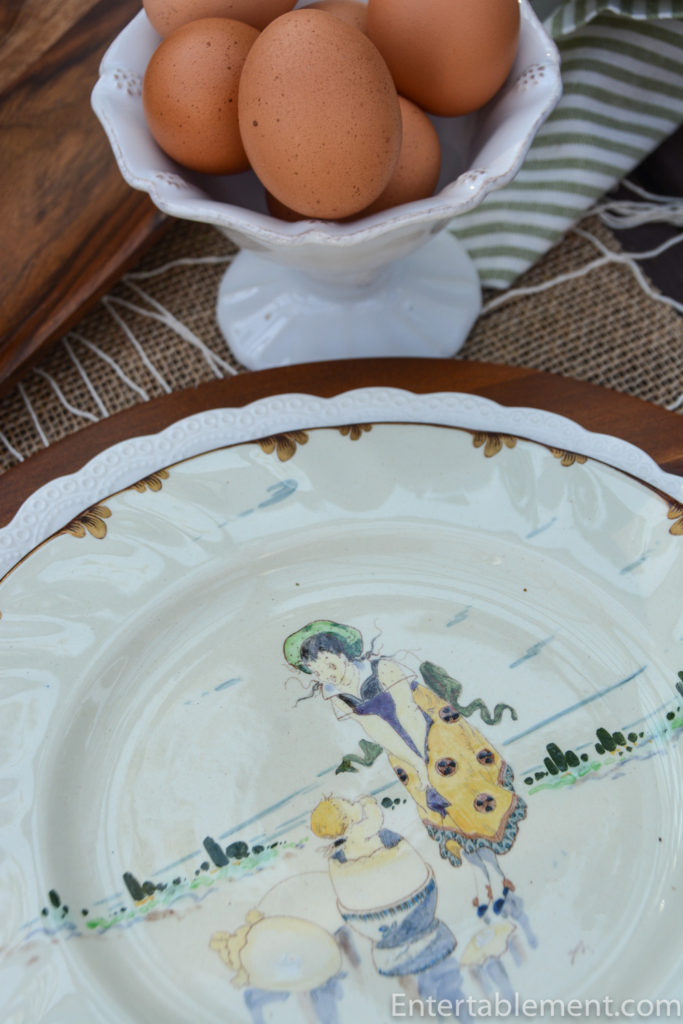
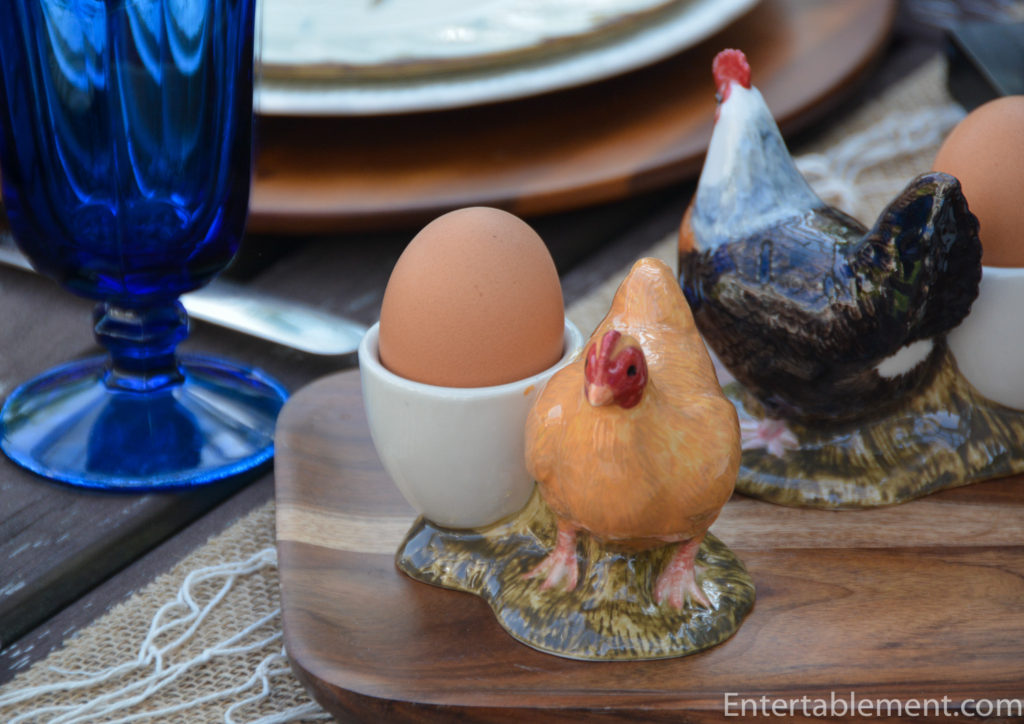
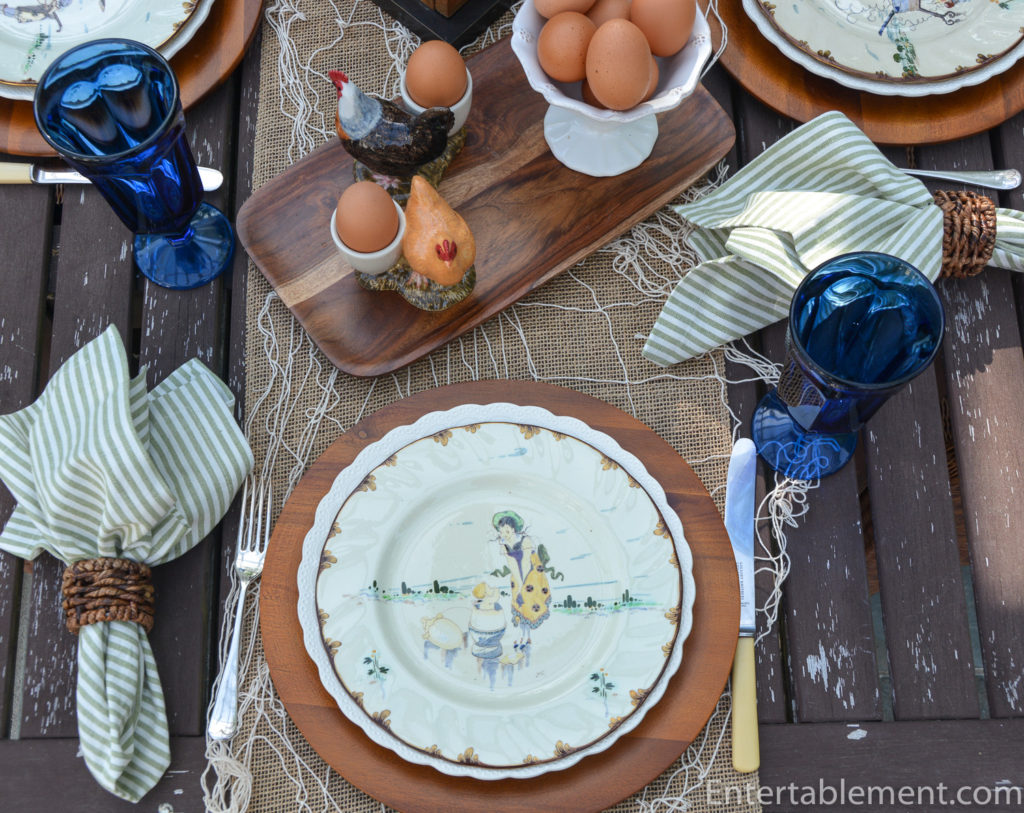


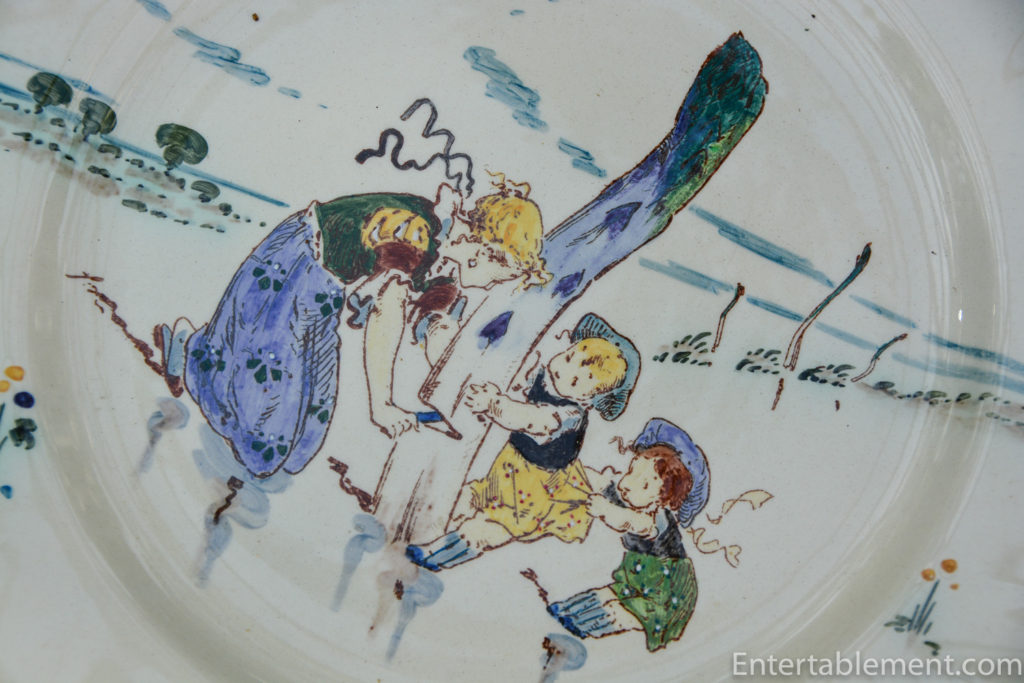
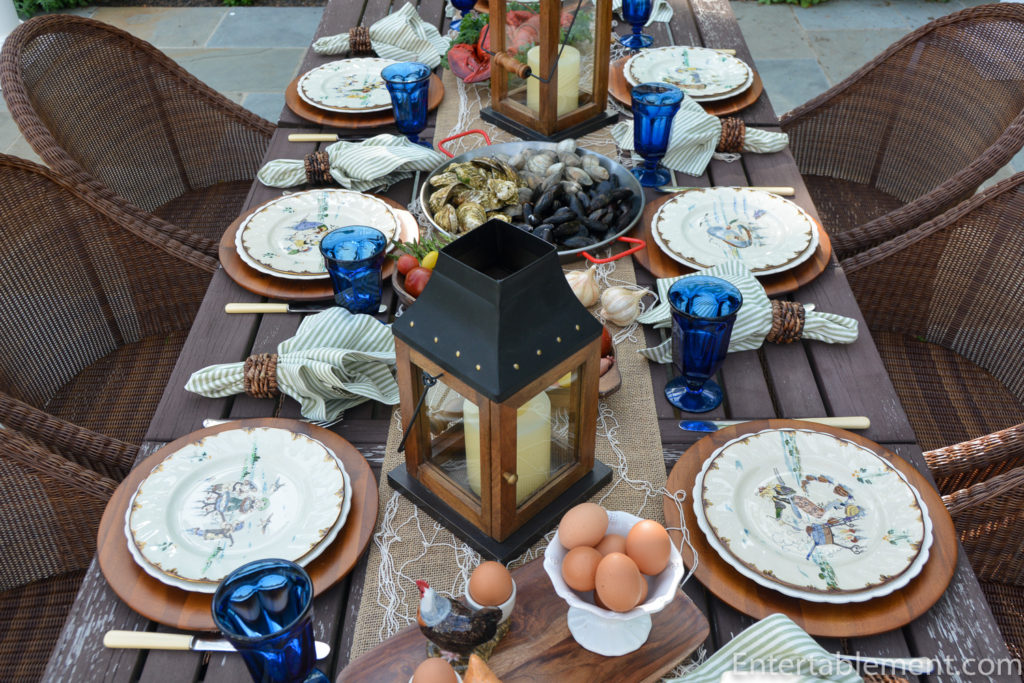
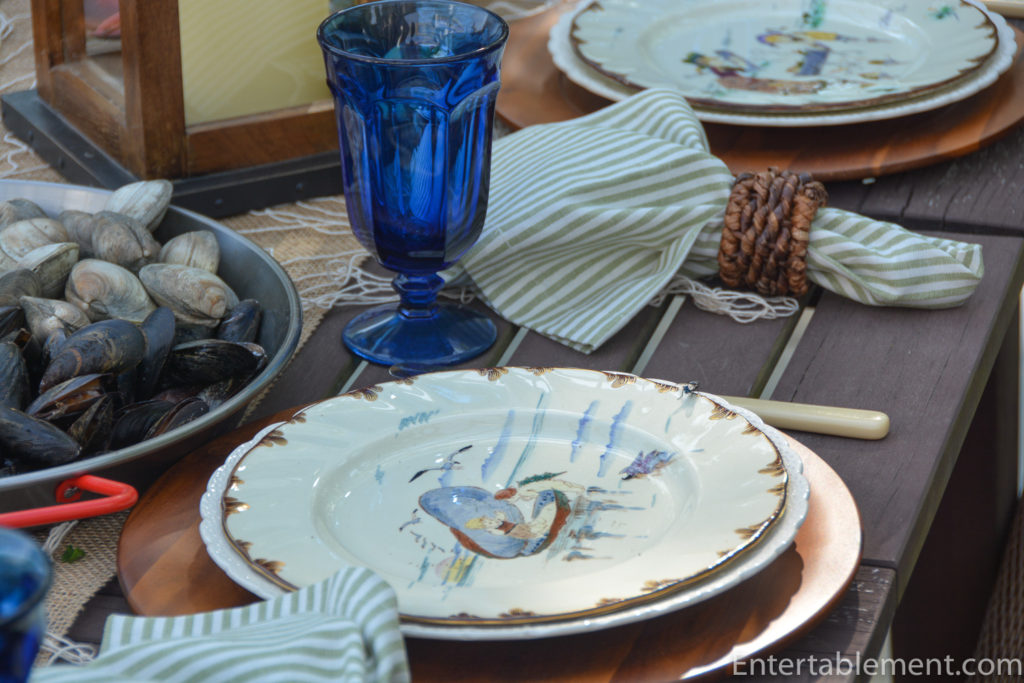
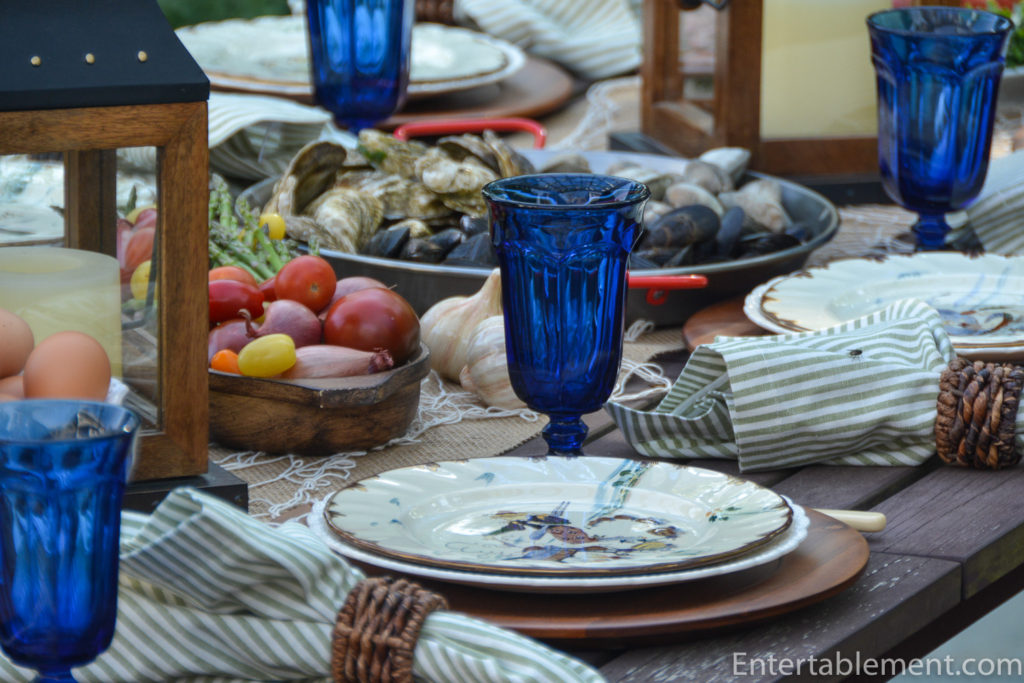


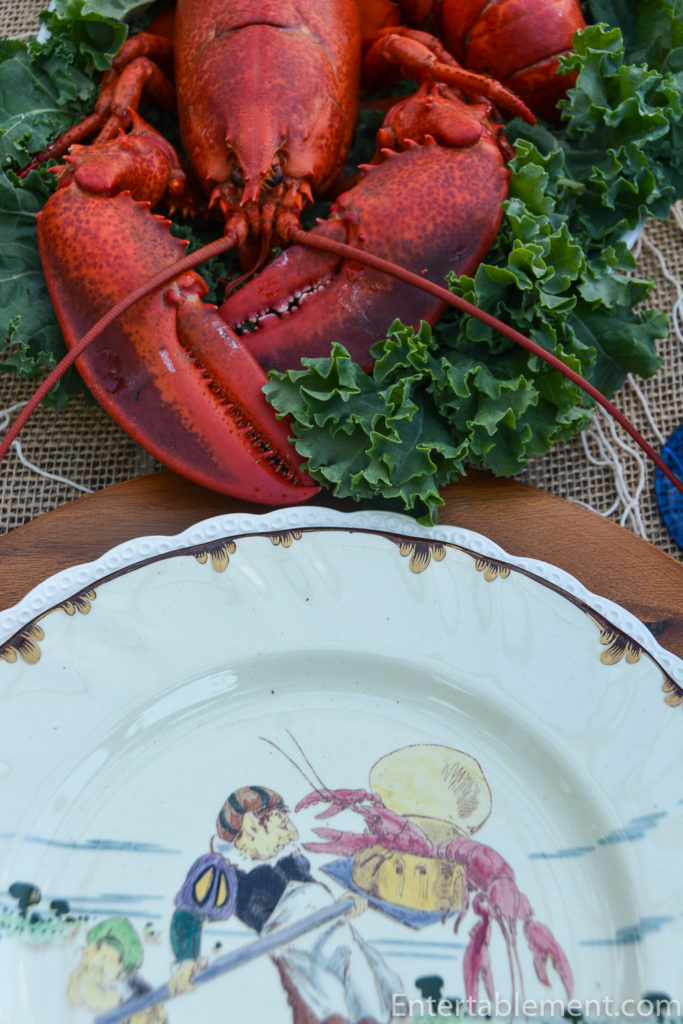
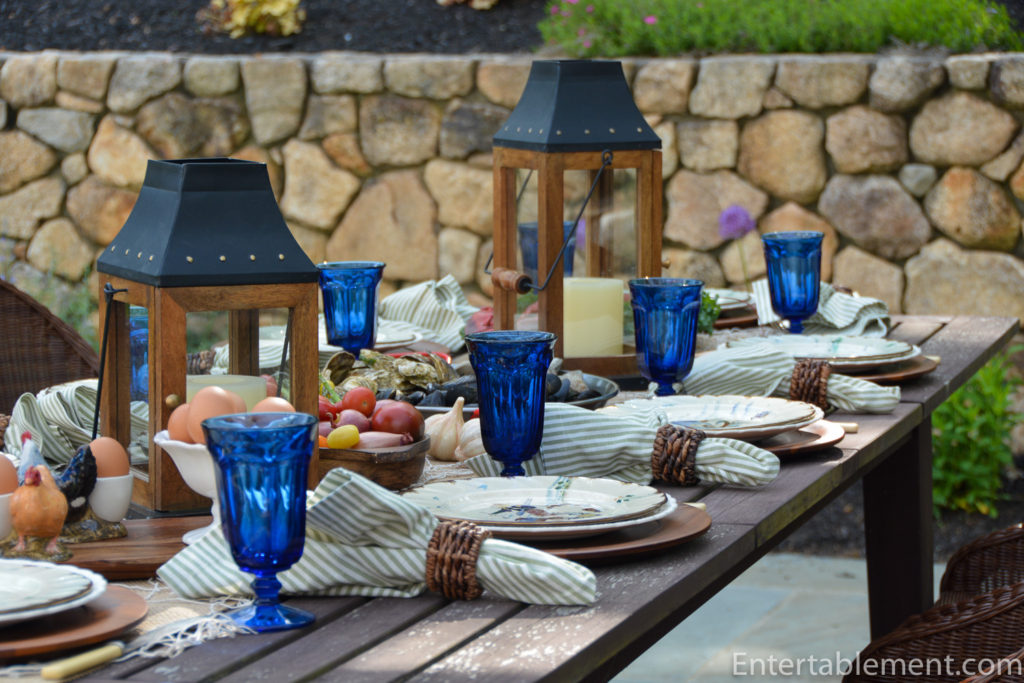



These have to be my favorites. They are truly works of art, and the atmosphere that you have created is idyllic. I could spend countless hours at this table. Thanks for sharing your wonderful design with us. CherryKay
I love plates with a sense of humour, and these fit the bill. Aren’t we lucky to have fun wit( tableware? Happy 4th, CherryKay.
Helen,
My favorites are the lobster wrestler and the baby in the clam! As I kept looking I realized this table took a lot of thought and preparation. Thank you for taking the time to set such a creative table! I would love to dine at this table! Your photos are always beautiful!
Have a wonderful weekend,
Tracy
Those are my two favourites, too, Tracy. . So glad you enjoyed it. It did take a bit of time to set up, but what I love about photographing tables, is we get to enjoy the results for a long time. How many meals do we set, and pouf, they’re gone? Thanks for taking the time to comment. I really appreciate it.
A smile spread across my face as I scrolled through the photos and commentary. You’ve created a fabulous table chock full of good eats. And the stone backdrop, your beautiful yard, rustic table, fresh food, oh my gosh – and those plates — I’m in love.
Hi Linda,
Thanks so much. I couldn’t believe my good luck with those plates. They’re on display in my china cabinet in the dining room now, spaced out with majolica oyster plates. They make me smile every day, too!